Photographs of Samuel Coleridge-Taylor
1905
Copyright photographs of composer Samuel Coleridge-Taylor provide us with a unique insight into his status in early 20th-century British society.
Samuel Coleridge-Taylor (1875–1912) was a pioneering British composer and conductor from the late 19th and early 20th centuries. Often compared to Gustav Mahler, his exceptional talent and influence in classical music were widely recognised.
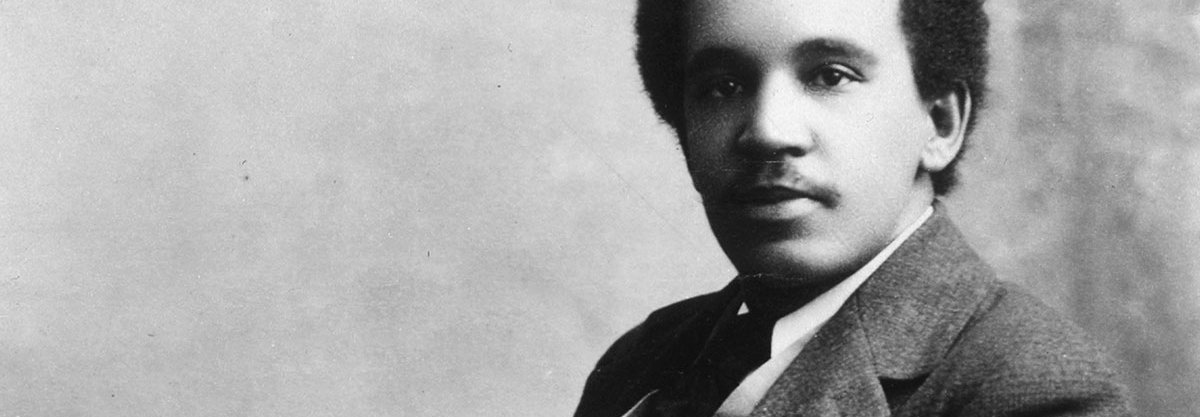
Samuel was born in 1875 in Holborn, London. His father, Daniel Peter Hughes Taylor, was a medical student from Sierra Leone, and his mother, Alice Hare Martin, was English. Although they weren’t married, their brief relationship led to Samuel’s birth. Daniel returned to Africa without knowing Alice was pregnant. He would never meet his son.
After Samuel was born, Alice lived with her father and his family. Recognising Samuel’s musical talent early on, the family encouraged his studies. At 17, he was admitted to the Royal College of Music, where he studied composition under Charles Villiers Stanford.
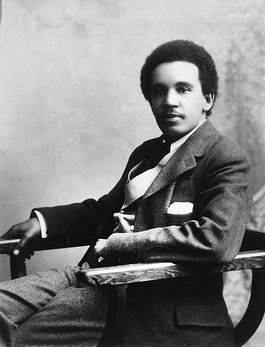
Photograph of Samuel Coleridge-Taylor from 1901. Catalogue reference: COPY 1/451
Coleridge-Taylor’s breakthrough work was Hiawatha’s Wedding Feast, based on Henry Wadsworth Longfellow’s epic poem about the Native American hero, Hiawatha. Premiering in 1898, it was an immediate success and earned him international recognition.
During his tours in the United States, Coleridge-Taylor was warmly received by both Black and white audiences. During his 1904 tour, he was even invited to the White House by President Theodore Roosevelt.
He was also a strong advocate for racial equality and colonial freedom, attending the inaugural Pan-African conference in London in 1900.
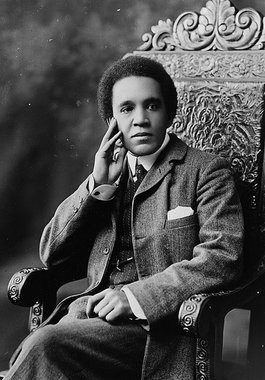
Photograph of Samuel Coleridge-Taylor from 1905. Catalogue reference: COPY 1/483
The National Archives holds a rich collection of photographs of Samuel Coleridge-Taylor. These photos, part of the COPY collection, were sent by individuals and businesses for copyright protection.
While the entry forms lack contextual information, they offer unique insights into Coleridge-Taylor’s status and image within British society.
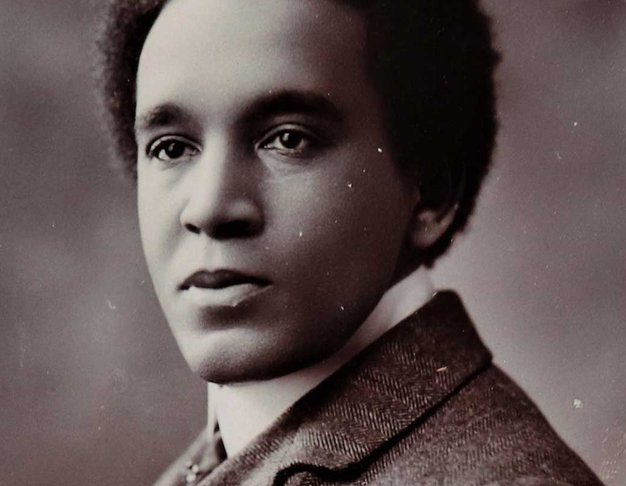
1905
Copyright photographs of composer Samuel Coleridge-Taylor provide us with a unique insight into his status in early 20th-century British society.
Samuel Coleridge-Taylor’s entry in the 1911 census lists him as 35 years old and head of the household at Aldwick, St Leonards Road in Croydon, South London. His occupation is given as ‘Musical Composer’ and his nationality as ‘British’. His wife, Jessie Coleridge-Taylor, is also listed in the census entry along with their two children, Gwendolen and Hiawatha. They also had a servant living with them.
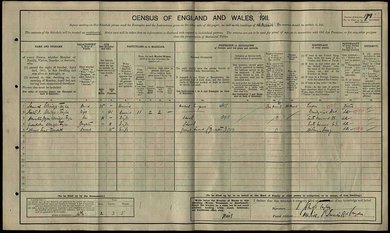
Census return for the Coleridge-Taylor family in 1911. Catalogue reference: RG 78/125
Samuel Coleridge-Taylor died from pneumonia only a year later, on 1 September 1912. He was just 37 years of age.
Despite his success as a composer, Samuel did not receive substantial royalties from his works, including his popular Song of Hiawatha. During this period, composers didn’t make a lot of money from their music. To earn quick cash, they often sold the rights to their pieces outright. This meant they missed out on the royalties that publishers earned from distributing their music.
His death duty is held at The National Archives and provides insight into how his estate was valued, including correspondence with the now widowed Jessie Coleridge-Taylor.
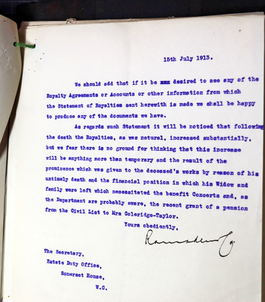
15th July 1913.
We should add that if it be xxx desired to see any of the Royalty Agreements or Accounts or other information from which the Statement of Royalties sent herewith is made, we shall be happy to produce any of the documents we have.
As regards to such statement it will be noticed that following the death, the Royalties, as was natural increased substantially, but we fear there is no ground for thinking that this increase will be anything more than temporary, and the result of the prominence which was given to the deceased’s works by reason of his untimely death and financial position in which his Widow and family were left which necessitated the benefit Concerts and, as the Department are probably aware, the recent grant of a pension from the Civil List to Mrs Coleridge-Taylor.
Yours Obediently.
[Signed]
The Secretary,
Estate Duty Office,
Somerset House,
W.C.
15th July 1913.
We should add that if it be xxx desired to see any of the Royalty Agreements or Accounts or other information from which the Statement of Royalties sent herewith is made, we shall be happy to produce any of the documents we have.
As regards to such statement it will be noticed that following the death, the Royalties, as was natural increased substantially, but we fear there is no ground for thinking that this increase will be anything more than temporary, and the result of the prominence which was given to the deceased’s works by reason of his untimely death and financial position in which his Widow and family were left which necessitated the benefit Concerts and, as the Department are probably aware, the recent grant of a pension from the Civil List to Mrs Coleridge-Taylor.
Yours Obediently.
[Signed]
The Secretary,
Estate Duty Office,
Somerset House,
W.C.
Part of Samuel Coleridge-Taylor's death duty record. Catalogue reference: IR 59/371
These records paint a picture of the family facing financial uncertainty after the untimely death of the head of the household.
Jessie was awarded a yearly pension of £100, which would have been the equivalent of £13,581.48 in 2024. This gesture highlighted the high esteem in which the composer was held.
By examining the 1921 census return for the family, we can see that they are still at the family home on St Leonards Road in Croydon, South London. Jessie Coleridge-Taylor, 51, is listed as head of the household, undertaking home duties as an occupation. Her son, Hiawatha Bryan Coleridge-Taylor, 20, is listed as a music student and Gwendolen Coleridge-Taylor, 18, is also listed. None of the household are in employment, which could suggest a level of financial stability, but we cannot know for certain.
Both of Samuel Coleridge-Taylor’s children would go on to carve out their own musical careers.
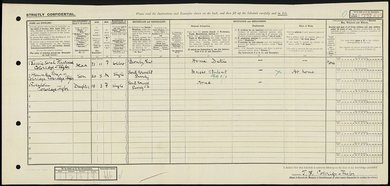
The census return for the Coleridge-Taylor family in 1921. Catalogue reference: RG 15/ 03414
By exploring documents relating to Samuel Coleridge-Taylor at The National Archives, we uncover a story of resilience, creativity, and profound influence.
Thanks to these records we gain an insight into a man who was celebrated internationally, yet also undervalued in his own time. However, his story, preserved through the archive, remains a testament to his enduring impact on the world of music.